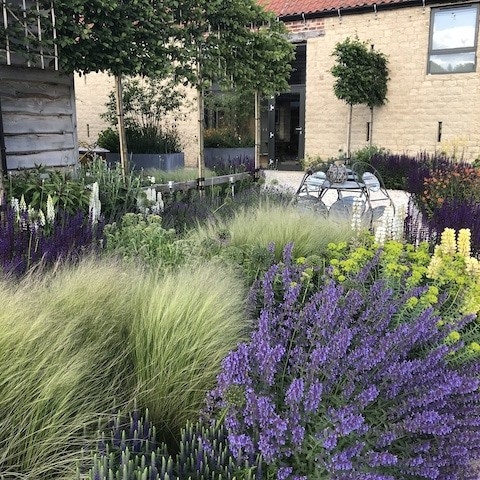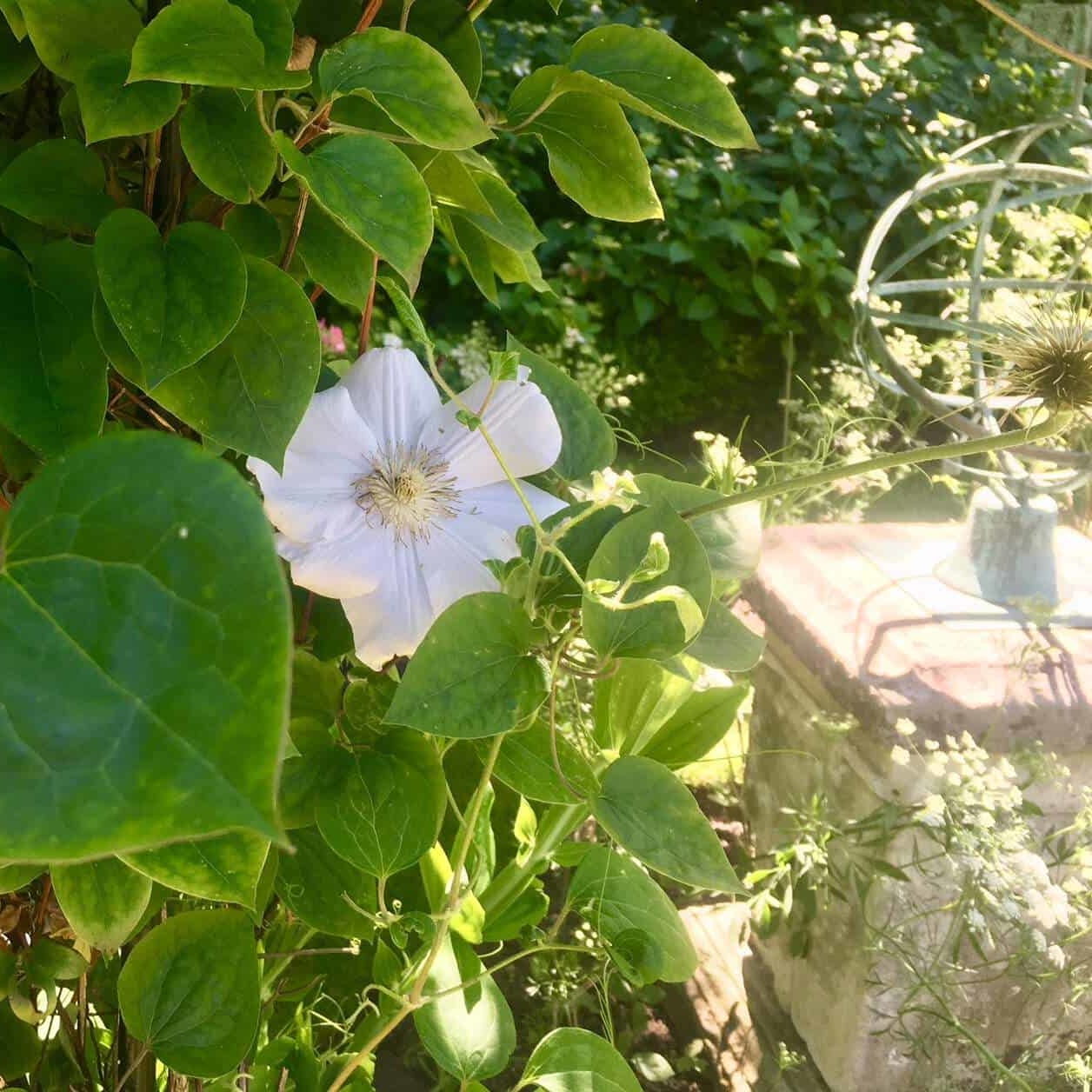Garden Design for a Changing World
Climate change is without a doubt one of the biggest global challenges of the 21st century. Extreme weather is one of the clear consequences of the climate crisis – here in the UK increased instances of drought, storms, wildfires and flooding are already wreaking havoc.
How can we design our gardens not only to withstand the effects of a changing climate, but also to be part of the solution?
The plants that we choose to grow in our gardens play a huge part. Many of us are witnessing how certain plants simply can’t cope with these unpredictable, intense weather patterns. Periods of drought wiped out parts of the garden, while other plants seemed to thrive in the 2022 heatwaves. We can redesign our planting schemes to reflect our changing world. If you’ve been experiencing repeated drought conditions in your garden it might be time to swap the water hungry hydrangeas for drought tolerant plants. Think mediterranean – rosemary, salvia, lavender, yarrow… there are thousands of options!
Not only can our gardens be designed to survive and thrive in harsh conditions with a little bit of know-how, they can also mitigate the effects of extreme weather. An inspiring example of this is the Castlegate Grey to Grey scheme in Sheffield city centre. Following devastating flooding the area was completely redesigned, using planting beds to capture and divert rainwater to reduce the risk of future flooding. The plants within the scheme are tolerant of periods of drought and also periods of intense rain. What is most amazing about this design is how beautiful it is all year round. A grey part of the city was transformed into a lush oasis, with plants playing a vital role in mitigating extreme weather.
Gardens in a changing world
We can take inspiration from this in our own gardens when it comes to managing rainfall. A key consideration is the balance between porous and non-porous surfaces. Lawns and planting beds of course absorb water, but hard-landscaping materials such as gravel are also porous and can help to reduce surface water runoff in heavy rain. This means more water is being absorbed where it falls instead of overwhelming drains.
Ironically, alongside increased instances of flooding, water scarcity is set to be a global challenge of the coming decades – many of us in the UK felt the effects last summer as hose pipe bans came into force. As gardeners water is a key resource, but there is a lot we can do to reduce our water consumption. A great starting point is installing a water harvesting system. These can range from sophisticated grey water systems that redirect waste water from our sinks and showers, to the lowly hero of rainwater harvesting- the water butt.
As well as collecting rain water to use in the garden, there are ways we can reduce the amount of water we need. Little tricks like watering in the morning or evening reduce the amount of water lost to evaporation, meaning less water usage. Applying mulch to our borders helps the soil retain moisture, which again reduces the amount of water needed. I’m a huge advocate of home composting – garden waste, kitchen waste and even cardboard go onto my compost heap. Once well rotted, this is thickly applied onto flower beds, increasing organic content of the soil (good for soil, good for plants) and helping to retain water, hugely reducing the need to water plants in dry weather. Less waste in landfill and less water use – it’s win win!
There is a lot we can do to help our gardens thrive as our climate changes – our gardens can be places of beauty, as well as standing on the front line in combating climate change. One small change at a time we can improve our little bit of planet earth.
Emily Kaye
I'm Emily Kaye, a garden designer from the south of England and I've been in this industry for over 10 years. Design & plants are my passion in my professional life, whereas in my personal life I'm passionate about yoga, creativity and innovation. I'm always looking for something new to make or do.



